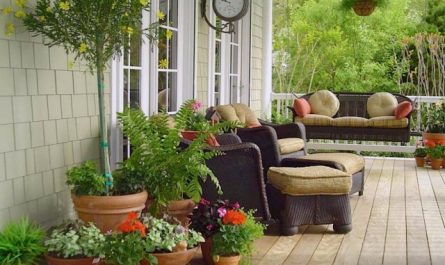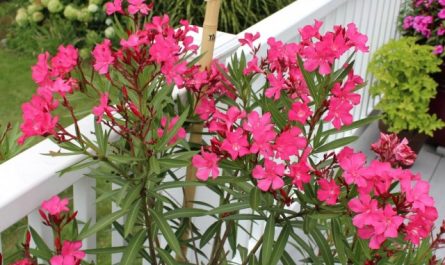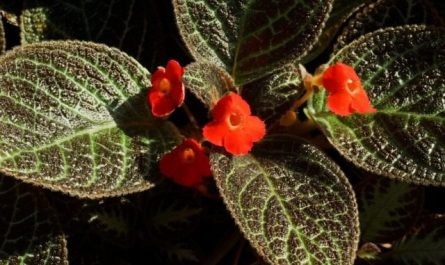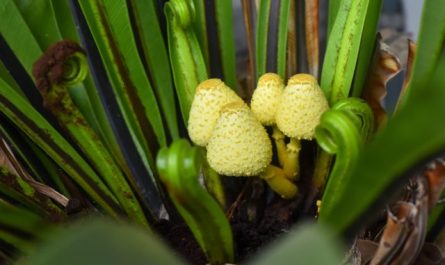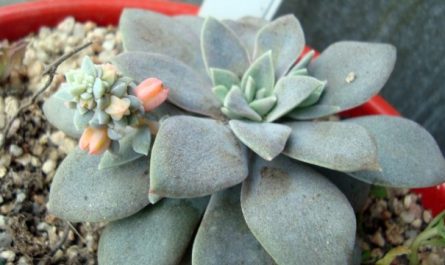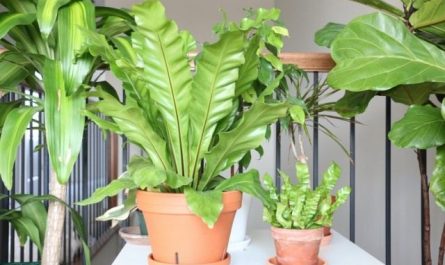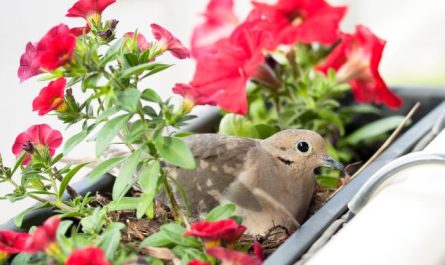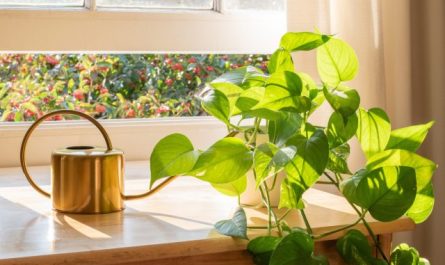Bulbous plants in indoor format are becoming increasingly popular. Bright and long flowering will please every gardener, and pots with withered leaves after flowering can be put away in a cool basement and forgotten about until spring. Babiana is one of the plants for fans of live bouquets, those gardeners who can provide a cool wintering and love, above all, spectacular flowering. Exotic and abundantly flowering, with beautiful leaves, this amazing culture in regions with harsh winters reveals its full decorative potential in rooms.

Contents:
What does babiana look like?
Quite a few exotic bulbous plants, which have become stars of gardens even in places where conditions are far from tropical, came to us from South Africa. Babiana is one of these African exotics. Despite the unprecedented beauty of its flowering, it is difficult to call babiana very popular. This plant is only just being discovered in our country, but due to the complexities of agricultural technology, babiana is already showing much more interest today not as a garden plant, but as a house plant.
Even in the southern regions it can only be grown with a winter cover of at least 20 cm of leaves. Whereas in a potted plant it is much easier to change the conditions depending on the stage of development, and the plant receives truly optimal care in this case.
The name babiana directly indicates both the origin of the plant and the animals that love to feast on the juicy bulbs of this tropical crop. The Latin name babiana comes from baboons – monkeys that raid plantings in the plant’s homeland and value underground bulbs no less than the tasty fruits of the best tropical trees.
Baboon (Babion) belong to the number of low-growing bulbous perennials. They are often compared to gladioli in character, growth form, foliage and flowering. But the differences between these crops are much greater than the similarities. The bulbs of this plant are small, only up to 2 cm in diameter, with a fibrous dense shell and a pronounced neck.
Babiana produces simple, straight or branched shoots. Bright, not too long, velvety pubescent leaves with a ribbed surface and a prominent central fold. Each bulb produces up to 5 leaves, which when grown in a group creates the effect of dense foliage.
Babiana blossoms are graceful and small, but very beautiful. In the inflorescence brushes, single funnel-shaped flowers are quite rarely located, blooming from the axils of folded-pubescent bracts. The tube is weakly expressed, the perianth expands like a bell, surprising with almost equal lobes of lanceolate, oval or ovoid shape. Three short stamens proudly flaunt inside the flower. After flowering, babiana sets round fruit boxes.
If you follow the usual agricultural technology with planting in the fall, babiana will bloom in early spring. By shifting the planting dates and adjusting the development phases, you can achieve later or earlier flowering.
The color palette of babiana is quite limited. This bulbous plant is associated, first of all, with a bright shade of cold lilac color. Among the varieties of babiana, candy shades of pink, fruity tones of yellow-orange and even red are not uncommon.

Types of Babiana for indoor growing
In indoor culture, babianas are represented Iris family (Iridaceae). Despite the fact that this plant can boast a fairly large species diversity in nature, only a few plants are used in indoor (and garden) culture.
Babiana straight (Strict Baboon) – one of the most beautiful species of babiana. Low shoots with a height of only up to 30 cm do not make the plant inconspicuous at all. Broadly sword-shaped, from 15 to 20 cm, leaves with amazingly beautiful pubescence seem to frame slender but strong peduncles, on which 4 to 6 flowers bloom in turn. Funnel-shaped flowers with a fairly long tube, slightly larger than in other species, bloom from the axils of folded and pubescent bracts. With a diameter of up to 4 cm, the flowers seem very bright due to the rich purple or scarlet colors. This species of babiana has many varieties famous for their white-red-violet shades.
Babiana red-blue (Babiana rubrocyanea) – a collectible and considered exclusive type of babiana. The plant has a purely typical appearance. Height up to 30 cm, straight shoots with a brush of funnel-shaped flowers and sword-shaped folded leaves do not stand out in any way. But the crimson color of the flower with a bright scarlet throat and wide obovate petals attracts admiring glances to the watercolor inflorescences.
Babiana aromatica (Babiana fragrans, formerly known as Babiana plicata (Babiana plicata)) – also a very beautiful species with small, narrower leaves of dark green color and straight shoots. Graceful lanceolate bracts emphasize the beauty of elegant tubular flowers with narrow, widely spaced petals of the corolla. Saturated watercolor colors are emphasized by a yellow or white spot on the petals.
Babiana is most often sold as Dutch-bred variety mixes containing several bulbs of different colors. Mixtures are especially popular. «Strictа Mix» и «New Hybrids», although plant characteristics may differ among different suppliers. It is better to choose babiana in catalogs based on the flower color parameter.



Conditions for growing indoor babiana
With the exception of a cool period of rest before flowering, babiana does not need any difficult conditions to recreate indoors. This plant loves light and heat, is not too capricious, and can grow in any room.
According to the development cycle, babianas are typical bulbous plants among indoor plants. After flowering, the plant slowly goes into a dry period of rest, after which it is transplanted into new containers, placed in a cool place until shoots appear, and taken out into the warmth and light during the period of active vegetation.
There is also a simplified version of cultivation – without the dormant stage, when the bulbs are forced for a single flowering and then thrown away. In this case, babiana is immediately placed in conditions for active growth after planting and kept in them until flowering.
Lighting and placement in the interior
Babianas need good lighting all the time, except for the months when the plant is in a leafless, dry dormant stage. Diffused but bright light for babiana is created and maintained in winter, after planting, and during active growth of flower stalks, and until the end of flowering and leaf shedding. Lighting for this bulbous plant should be equally bright. But it is better to protect babiana from the midday sun.
Babiana is grown mainly on windowsills, the plant responds positively to additional lighting in winter (when the flowering period shifts), but natural bright light is more suitable for it. This bulbous plant is uncomfortable on southern windowsills, it is better to place babiana on eastern or western windows.

Temperature conditions and ventilation
During the period of active growth, babiana feels great at room temperatures, is not afraid of heat, although it blooms longer at a temperature of 20 to 23 degrees Celsius. The maximum temperature for this crop is best limited to +28°C.
Babianas need a cool period to prepare for flowering. The plant is placed at a temperature of about 10 degrees Celsius immediately after planting, leaving it in such conditions until the shoot begins to grow. After this, the plant is transferred to normal room temperatures and a familiar environment.
Babiana is one of the forced bulbous plants, sensitive to sudden changes in conditions. At the budding and flowering stage, it does not tolerate drafts, but the lack of fresh air does not benefit this beauty either. Careful ventilation with protection for the plant should be as frequent as possible.
Caring for babiana at home
Babiana is not a difficult-to-care-for bulbous plant, but it is somewhat more sensitive to dry air in indoor culture. Watering is done carefully and according to a standard scheme, and feeding does not require any special tricks. Regular care, which the plant requires during the period of active vegetation, is within the power of even inexperienced gardeners. Babiana is suitable for those who want to get acquainted with the peculiarities of growing bulbous and tuberous plants in indoor culture.
Watering and air humidity
During the period of active growth in warmth and good lighting, babiana needs active and abundant watering. The soil is not allowed to dry out completely, drying only the upper layer of the substrate in the containers between waterings. It is advisable to drain the water immediately after watering. With good drainage, babiana can be watered not by the classic method, but by immersing the container in water to saturate the soil.
After flowering, watering is gradually reduced both in frequency and in the amount of water, regulating them so that watering is completely stopped before the stem and leaves die off. Bulbs are not watered at all during the period of complete rest, they are kept in a completely dry substrate until transplantation.
During the cool period, you need to be very careful with watering. The soil should not be completely dry at this time, but it is also undesirable to take the substrate beyond the limits of light moisture. Active root development is supported by rare, not abundant and careful watering. Normal watering is resumed only after the plant is taken out into the warmth.
Babiana is sensitive to dry air and loves a humid environment. The plant prefers to be in a room with humidity levels of 50%. For babiana, despite the pubescence on the leaves, you can use careful spraying from a long distance. In summer, spraying can be done daily. The plant feels good when installing any home humidifiers, including trays with wet moss.

Top dressing and fertilizer composition
Fertilizers for babiana are added during the active growth phase. One feeding every 1-3 weeks is enough for the plant.
For babiana, use fertilizers for bulbous plants or at least mixtures for flowering crops – with increased phosphorus and potassium content. In summer, 1-2 additional feedings can be done with organic fertilizers.
Trimming and shaping
This plant only requires timely removal of dry leaves and peduncle. Babiana sheds its leaves during the growing season, actively growing greenery following the shoot. Dry leaves are cut off carefully, with a sharp knife.
Transplantation and substrate
During the period of complete dormancy, the bulbs are not watered at all, they are kept in a completely dry substrate until transplantation. Babianas are transplanted annually. Digging up the bulbs after the stem dies and storing them outside the soil is not the best strategy, because this way you can lose the planting material, and babiana is much better preserved in dry soil. After the end of the dry warm dormancy period, in October at the usual flowering time, babiana is taken out of the old container, inspected, dry and damaged areas of the roots and scales are removed, and transplanted into a new substrate.
Babianas are never grown in too spacious containers. Shallow pots with a diameter of 10 to 15 cm are selected for them, placing the plants in groups of 4-5 bulbs.
A light, sandy substrate with a low tendency to compaction is best suited for babiana. For this crop, you can choose either a special soil for bulbous or succulent plants, or make up a soil mixture yourself. A regular mixture of equal parts of turf soil and sand with the addition of wood ash or bone meal is suitable for babiana, as is a mixture of equal parts of a universal substrate with sand. You can also add other loosening additives to the substrate, such as perlite.
Large drainage must be placed at the bottom of the containers. When planting babiana, it is necessary to ensure that the corms do not come into contact with either the walls of the container or with each other, leaving enough space for several babies to emerge. The planting depth for babiana bulbs is about 5 cm (twice the height of the bulbs).
Diseases, pests and problems in cultivation
Babiana, which combines indoor and garden status and spends the summer outdoors, is often characterized by an increased susceptibility to diseases typical of gladioli – fusarium, brown heart rot, scab, and root onion mites or gladiolus thrips love this plant.
In indoor culture, it can suffer from soil-dwelling pests and rot due to over-watering of the soil. In any case, emergency digging with treatment of damage is as important a measure to save the plant as subsequent treatment with fungicides and insecticides.
Spider mites and mealybugs are rarely found on babianas.
Common growing problems:
- growth cessation or slow growth when the soil dries out or in cold conditions;
- the appearance of wet brown spots on leaves due to accumulation of water and dampness.

Reproduction of babiana
This bulbous plant can be easily obtained due to the active formation of daughter bulbs. Lateral corms are separated during transplantation, planting with bulbs of the same size in separate containers according to the same rules as large full-fledged bulbs.
It is possible to obtain a new generation of babiana from seeds, which are set even in room conditions. However, this option is specific and requires a lot of time. Babiana from seeds will bloom no earlier than the third or fourth year. Sowing is carried out according to the standard method in light sandy soil under glass or film immediately after collection or in early spring.

